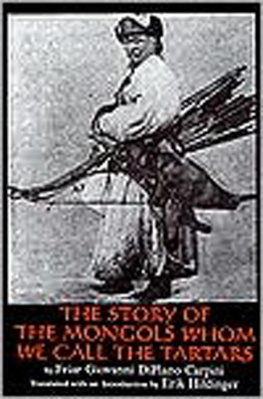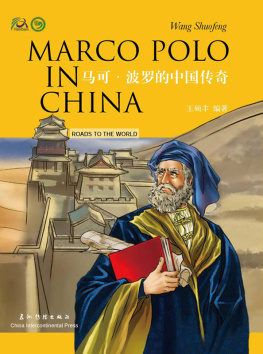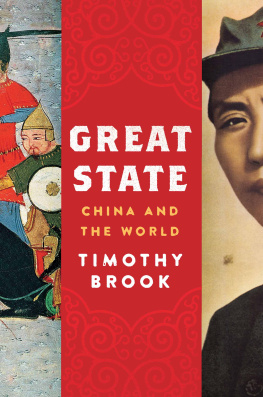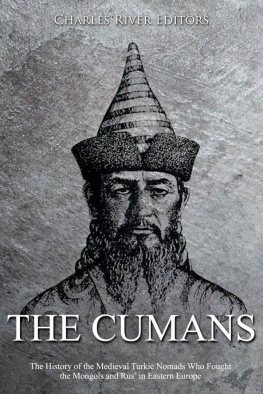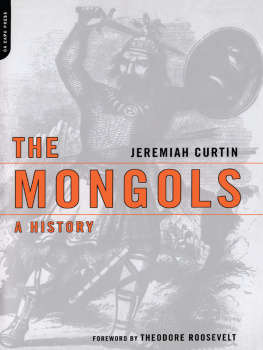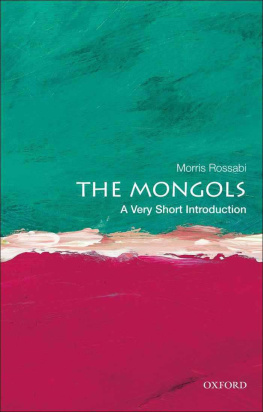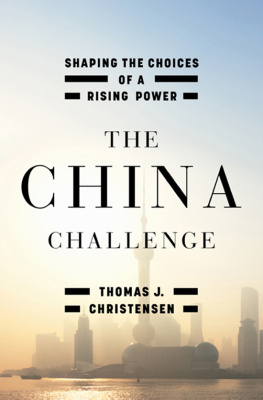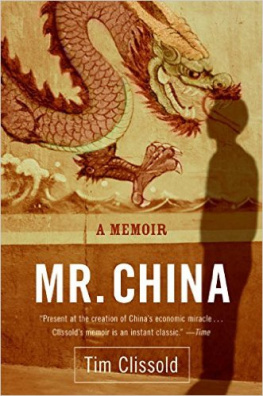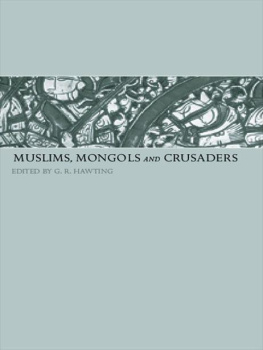THE STORY
OF THE MONGOLS WHOM WE CALL THE TARTARS
HISTORIA MONGALORUM
QUOS NOS TARTAROS APPELLAMUS
Friar Giovanni Di Plano Carpinis
Account of his Embassy
to the Court of the Mongol Khan
Translated by
Erik Hildinger
BRANDEN PUBLISHING COMPANY
Boston
Copyright 1996
by Branden Publishing Company, Inc.
Library of Congress Cataloging-in-Publication Data
Giovanni, da Pian del Carpine, Archbishop of
Antivari, d. 1252.
[Historia Mongolorum. English]
The story of the Mongols whom we call the
Tartars = Historia Mongalorum quos nos Tartaros appellamus : Friar Giovanni di Plano Carpini's
account of his embassy to the court of the Mongol Khan / translated by Erik Hildinger.
p. cm.
Includes bibliographic references and index.
ISBN 0-8283-2017-9 (pbk.)
1. Mongols--History.
2. Asia--Description and travel.
I. Title.
DS6.G5413 1996
950'.04942--dc20 96-940
CIP
|
|
BRANDEN PUBLISHING COMPANY, Inc.
17 Station Street
Box 843 Brookline Village
Boston, MA 02147
THE STORY OF THE MONGOLS
Contents
Preface 6
Translators Note 30
Prologue 34
Chapter One
The Tartar Country, its Location and Description and its Weather
Chapter Two 36
The People, their Clothes, Homes, Possessions and Marriages
Chapter Three 42
Religion, What the Tartars Believe are Sins; Divination, Absolution and Funeral Rites
Chapter Four 50
Their Good and Bad Customs, their Food and their Habits
Chapter Five 55
The Founder of the Tartar Empire, its Princes and the Power of the Emperor and his Government
Chapter Six 71
War, the Organization of the Tartar Forces, their Arms, their Tactics when Fighting and their Cruelty to Captives, How they Besiege Forts, and their Treachery toward those who Surrender to them
Chapter Seven 79
How The Tartars Make Peace; the Countries they have Conquered, the Countries which have Resisted them Successfully, and the Despotism the Tartars Exert over their Subjects
Chapter Eight 85
How to Fight the Tartars and what to Expect; the Arms and Organization of such Forces; How to Meet Tartar Cunning in Battle, and how to Supply Fortresses and Cities, and What should be Done with Captives
Chapter Nine 94
The Provinces We Passed Through and their Location; the Court of the Emperor of the Tartars and his Government, and the Witnesses who Met us there
Notes 121
Bibliography 128
Index 131
PREFACE
T
he modern state of Mongolia lies to the west and north of China. Seven hundred years ago those who spoke the Mongol language, Tungisic in origin, also lived on the steppes further north and west in what is now Russia and Siberia, and many still do. These Asian people competed for a living with their more numerous Turkic-speaking cousins and their occasional incursions into the civilized lands surrounding the steppes had generally had horrifying consequences for sedentary nations.
The Mongols were a nomadic people living from their herds and flocks. Thus they moved between two areas summer and winter, to find grazing for the animals. Their homes were (and some still are) gers, round felt tents easily disassembled or moved from place to place. They travelled by horse which had first been domesticated in southern Russia perhaps three thousand five hundred years ago. They fought interminably among themselves and the bow was their weapon-- metal is hard to work and scarce in the steppe. In any case they were superb archers.
Mongol society, like that of other steppe peoples, was simple. The religion was shamanistic, an ancient and primitive belief in a multitude of spirits such as is found in northern Asia and among the natives of the Americas who had crossed the Bering straight from Asia so long before.
The steppe has three distinct areas. To the north a forested belt, then the great grasslands, and finally the desert regions. The better areas were the object of constant struggles among the steppe tribes, whether Mongols, Turks, Merkits, Tatars, Naimans, or any of a dozen nations who are only names today. The trigger of such a conflict might be a political shift among the tribes, or a period of drought, a common occurrence on the steppe, which caused one tribe to seek better territory at the expense of another. Thus, every man was, of necessity, a warrior. War is the profession of the steppe and, among pre-industrial peoples, no one is better at it. Europe knew this from the incursions of the Huns and Magyars in the fifth and eighth centuries; it was revisited by this scourge in the thirteenth, and it was stunned.
In April 1241 Mongol armies had killed some one hundred thousand European knights and men-at-arms in Poland and Hungary. They had beaten every western army they had come against. Henry II of Silesia was dead, Boleslav IV, Count of the Poles, was in hiding, and the kingdom of Hungary no longer existed; its king, Bela IV, was fleeing to the Adriatic coast pursued by a Mongol army determined to kill him. As for the country itself, the Mongols began to systematically strip and depopulate it and to strike coins. It belonged to Batu, grandson of Jinghiz Khan, the Emperor of All Men.
Meanwhile, Pope Gregory IX and the Holy Roman Emperor Frederick II prepared to continue their personal war while Mongol scouts approached Venice. There was no army the Europeans could muster to oppose them. There seemed no reason to suppose that western Europe would not suffer the fate of central Europe and Russia.
In February 1241 the Mongol army had left its base in southern Russia and begun to cross the frozen rivers into central Europe. It consisted of about seventy thousand men, all of them cavalry. Nominally commanded by Batu, a grandson of Jinghiz Khan, he was guided by his grandfathers famous lieutenant, Subotai, a brilliant campaigner. This general had commanded in the campaigns against the Northern Sung of China and had helped in the destruction of the Kwarizmian Empire. He had planned the campaign against Europe for a year and the results would show.
The Mongols had defeated every major Russian principality and had spent a year resting and regrouping in what is now the Ukraine before crossing into central Europe. Their target was Hungary, though to achieve its defeat the Mongols wished to remove opposition from other quarters. To that end the Mongol army was divided into two unequal forces. The smaller part of about thirty thousand men started off first at the beginning of March and went north into Poland to draw off any support for Hungary that might be found there. It was commanded by two of Jinghiz Khans grandsons, Baidar and Kaadan, and swept in a northward arc past the edge of the Carpathians and into Poland. The larger army of about forty thousand advanced under the command of Subotai and Batu a few days later and was itself broken into two contingents each of which entered the Carpathians by a different route and crossed into Hungary.
Mongols scouts were seen ranging Poland and Hungary and the European nobility began to muster armies. Count Boleslav IV of Poland, one of several lords who claimed to be its king, assembled one. It consisted of Polish knights, foreign knights from as far away as France and Germany, and members of the military orders. These last, such as the Knights Templar and the Hospitallers were monks who submitted to rigid personal discipline and fought as knights for the protection of the church. They were Europes most disciplined and professional soldiers. This army numbered about thirty thousand.
Duke Henry of Silesia drew up a similar, somewhat larger army. To the south, King Bela of Hungary gathered his forces, but found it difficult as his nobles mistrusted his power and were uncooperative.
Next page
